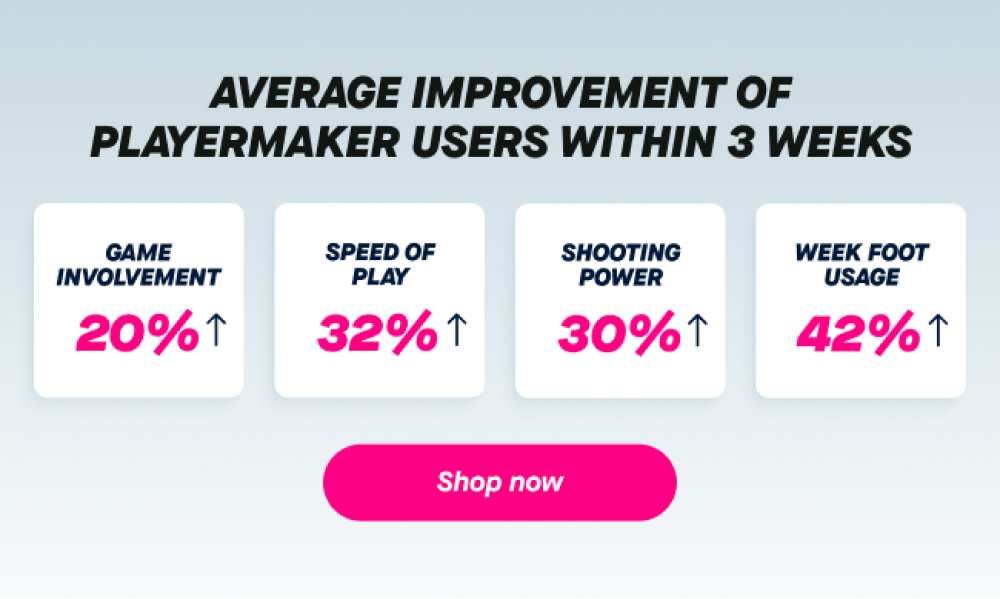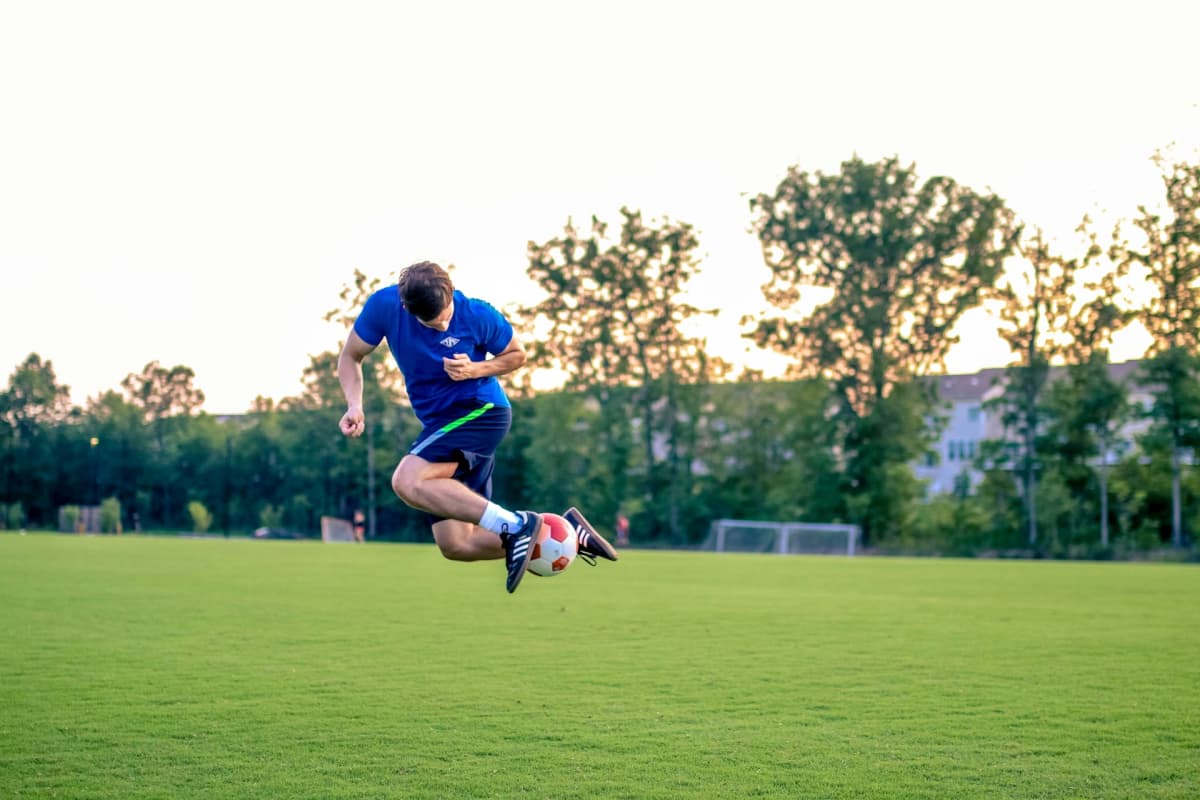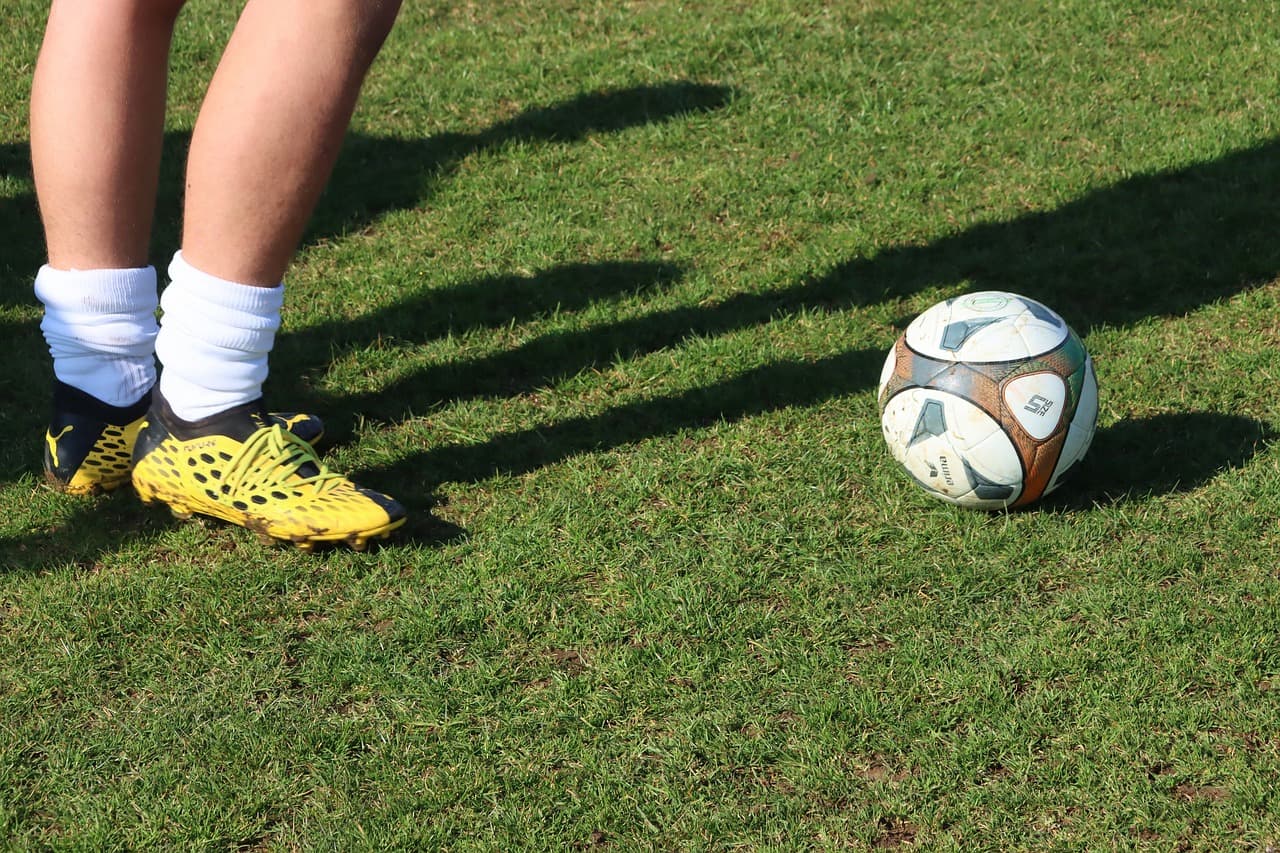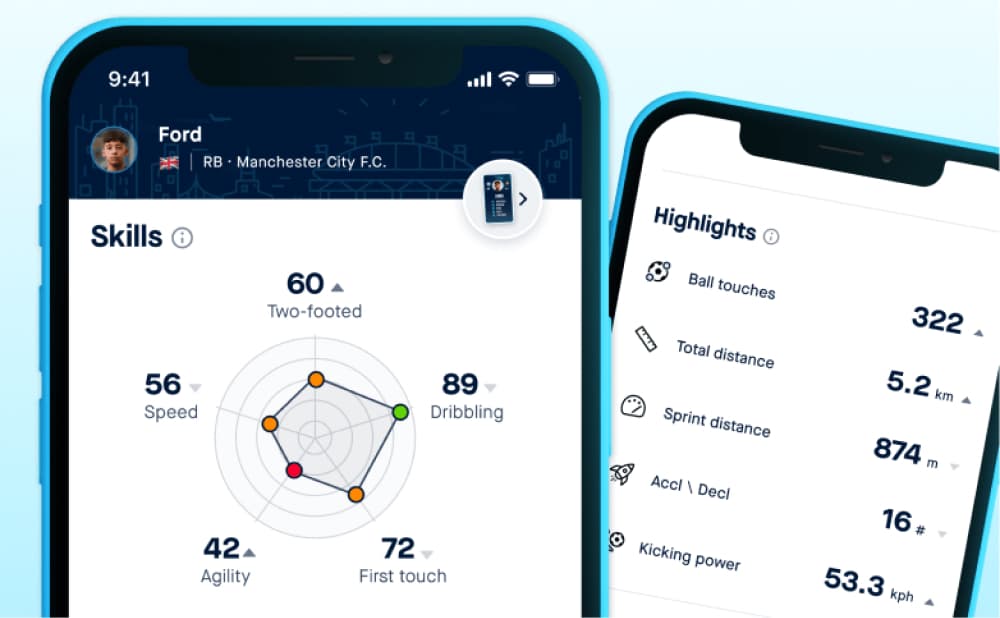Dribbling is a critical soccer skill for every player. It helps you control the game, outsmart opponents, and create opportunities. According to OPTA, a successful dribble is when you beat an opponent while retaining possession.
Achieving this requires technical ability, mental awareness, and consistent practice. You must also learn many skills, such as nutmegs, stepovers, rainbow flicks, etc.
However, you need insightful data to improve your dribbling skills. With Playermaker, our cutting-edge AI soccer tracker, you can effortlessly track your progress, set achievable goals, and measure your improvement over time.
In this article, we’ll detail why dribbling is so crucial, how to be a better dribbler, the best techniques, and the common mistakes to avoid:
Why Is Dribbling Important In Soccer
Dribbling is the backbone of attacking play in soccer. It lets you dictate the tempo, create scoring chances, and keep the opposition on their heels.
Dribbling is also critical for defenders. For instance, wing-backs regularly require strong dribbling skills to defend and push the ball forward.
Here are some important reasons why dribbling is so important:
1. Create Scoring Opportunities
Dribbling is usually the first step toward creating scoring chances. You can build opportunities for a site; you can also set up a teammate when dribbling past defenders. This is important in tight games where breaking through a defense is critical.
2. Draw Opponents and Create Space
When you take on defenders, you force them to leave positions and disrupt the defensive structure. This creates space for your teammates to exploit. Moreover, you can stretch the defense and create gaps for others to run into.
3. Maintain Possession and Control the Game
Dribbling is also about maintaining control over the game. Good dribblers can retain possession under pressure. This skill allows their team to control the tempo and rhythm of the match.
Holding onto the ball in critical moments can frustrate the opposition and change the flow of the game. As a result, this can change the outcome of a game.
4. Fundamentals of Dribbling
Mastering the fundamentals of dribbling is essential for all soccer players. These basics lay the foundation for more advanced techniques, which are critical in ensuring consistent performance.
5. Maintaining Close Ball Control
Close ball control is the essence of effective dribbling. When the ball stays near your foot, you can react quickly to defenders and change direction with ease. This skill is particularly important in the penalty box.
6. Keeping Your Head Up
One of the most common mistakes players make is dribbling with their heads down. Keeping your head up while dribbling allows you to observe the field, spot teammates, and anticipate defensive movements.
7. Getting a Good First Touch
A good first touch is vital as it sets up your next move, whether that’s a pass, shot, or continued dribble. It’s about cushioning the ball in a way that allows you to maintain control and immediately react to the situation around you.
8. Different Surfaces and How They Affect Dribbling
The surface you play on can significantly impact your dribbling. Grass, turf, and indoor courts each present unique challenges. Therefore, adjusting your dribbling technique—based on the surface—helps you maintain effective control.
9. Body Positioning and Balance
Proper body positioning and balance are crucial for maintaining control while dribbling. A low center of gravity helps in making quick turns and changes in direction. Lean slightly forward and keep your knees bent to stay balanced and ready to react.
Techniques and Skills for Effective Dribbling
Whether you’re a beginner or an advanced player, refining your dribbling techniques is key to becoming a more effective player.
Here’s how:
The Basic Techniques
- Inside of the foot dribbling: This is the most commonly used dribbling technique. It provides the most control and is ideal for tight spaces.
- Outside of the foot dribbling: This technique allows for quicker changes in direction, which is useful when you need to maneuver around defenders quickly.
- Laces dribbling: Dribbling with the laces of your shoe is effective for covering long distances quickly. This technique is often used during sprints.
The Advanced Techniques
- Sole rolls: This technique involves rolling the ball with the sole of your foot to change direction or shield the ball from defenders. It’s a great way to maintain possession under pressure.
- Cruyff turn: Named after the famous Dutch player Johan Cruyff, this move involves faking a pass or shot before quickly turning and changing direction.
- Stop and start dribbling: This involves varying your pace while dribbling, which can throw off defenders and create opportunities to break through the defense.
- Change of pace dribbling: Changing speed while dribbling is an effective way to catch defenders off guard. Accelerate quickly after a slow dribble to create space and opportunities.
Dribbling Drills and Exercises
To improve your dribbling, consistent practice through various drills is essential. Here are some key drills:
1. Cone Dribbling Drills
You should set up cones in a straight line or zigzag pattern. It’s a classic drill for improving dribbling control and agility.
As you dribble through the cones, focus on maintaining close control, quick turns, and sharp changes of direction.
Additionally, vary the distances between cones to challenge yourself further.
2. 1v1 Dribbling Drills
Practicing against a defender in a one-on-one situation is one of the best ways to simulate game-like conditions. It’s important to focus on different dribbling techniques to beat the defender.
3. Small-Sided Games
Small-sided games—such as 3v3 or 4v4—force you to dribble more frequently. That’s due to the smaller playing area and fewer players.
These games emphasize dribbling, quick passes, and maintaining possession.
4. Shadow Dribbling
In shadow dribbling, you must mimic the movements of a more experienced player or coach. This drill develops better technique, coordination, and footwork. It’s also a great way to adjust your dribbling style based on different scenarios.
Importance Of Developing Game Awareness
Dribbling is also about mental sharpness, not just your physical condition. That’s why developing game awareness is crucial to becoming a more effective dribbler.
Here’s how:
1. Reading the Game
To be an effective dribbler, you must understand the flow of the game. This involves predicting where your teammates and opponents will be, alongside recognizing patterns in the opposition’s defense.
2. Anticipating Opponent Moves
Anticipating what your opponent will do next gives you a significant advantage. If you read their body language and positioning, you can predict movements and adjust dribbling.
3. Making Quick Decisions
Dribbling often requires split-second decisions, whether it’s choosing to pass, shoot, or continue dribbling.
So you must practice scenarios where you have to react quickly to changing situations.
4. Staying Calm Under Pressure
Dribbling under pressure, especially in high-stakes situations, can be difficult. That said, staying calm and composed allows you to think clearly and make better decisions.
You can also focus on breathing techniques and mental exercises to remain calm.
Common Dribbling Mistakes and How to Avoid Them
Even the best players make mistakes, but learning to avoid common dribbling errors can significantly improve your performance.
You should avoid these common mistakes:
1. Over-Dribbling
Although dribbling is important, holding onto the ball for too long can lead to turnovers and missed opportunities. You should know when to pass or shoot instead of over-dribbling.
2. Poor Ball Control
Losing control of the ball while dribbling is a common issue, especially when under pressure. You should regularly practice drills that focus on close control and quick reactions to mitigate this.
3. Ignoring Defensive Pressure
One of the biggest mistakes players make is failing to recognize and respond to defensive pressure. Therefore, always be aware of where the defenders are and adjust your dribbling strategy accordingly.
Use Playmaker to Improve Your Dribbling Skills
Technology has revolutionized how players improve their skills.
Playermaker is at the forefront of this innovation. For instance, CITYPLAY is a wearable device that tracks your dribbling performance.
It offers detailed analytics on your movements, touches, and technique. These are all critical for your dribbling skills.
You can also gain insights into areas needing improvement, monitor your progress, and refine your dribbling skills with accuracy.
Final Thoughts
You must improve your dribbling skills to become a better player. However, improving your soccer dribbling skills is a journey. It requires dedication, practice, and a willingness to learn.
Yes, although it’s possible to see some improvements in a short time, becoming a proficient dribbler takes consistent effort and patience.
With Playermaker, our AI-powered smart soccer tracker, you can seamlessly track your dribbling progress, set personal goals, and see measurable results.

Whether you’re just starting out or already on the path to a pro career, Playermaker can be an invaluable tool in your soccer journey.









